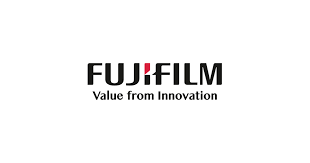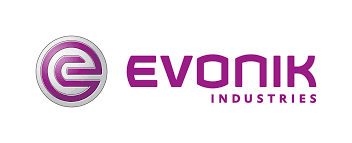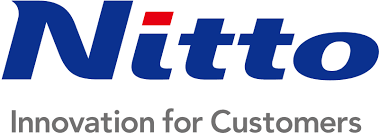Global Digital Pathology Market Size, Share & Trends Analysis Report By End-user, By Region, and Segment Forecasts, 2023 - 2032
- Report Summary
- Table of Contents
- Segmentation
- Methodology
- Download Sample
Digital pathology is an information platform empowered by computer technology, focusing on image-based data management derived from digital slides. This technology serves a dual purpose within the realm of research. Firstly, it provides specialized file storage and viewing applications to organize a wide range of images, including macroscopic views, tissue microarrays, and complete slide images. Secondly, digital pathology contributes to research through the development and deployment of image analysis techniques.
Global Digital Pathology Market was valued US$ 1.07 Bn in 2022 and is expected to reach ~US$ 2.7 Bn by 2032, growing at a CAGR of 10% during the forecast period 2023-2032.
The global digital pathology market is experiencing significant growth driven by several key factors. One primary driver is the escalating prevalence of cancer, which has led to a heightened demand for precise diagnostic solutions. Additionally, numerous key players in the industry are continuously developing new digital pathology systems, further fueling market expansion. Chronic diseases, as highlighted in a report by Medscape, are linked to increased mortality rates, underscoring the critical need for advanced diagnostic tools. This demand is particularly pronounced in the context of rising cardiovascular disorders, prompting the development of advanced diagnostic solutions. Consequently, the growing incidence of chronic and cardiovascular diseases is propelling the digital pathology market's growth.
The market is further bolstered by an aging population and rapid technological advancements in digital pathology systems. As revealed by the National Cancer Statistics in 2020, the United States alone recorded approximately 1,806,590 new cases of cancer. This surge in cancer cases is closely associated with the increasing elderly population, as advanced age is a significant risk factor for cardiovascular disorders.
COVID -19 Impact on Digital Pathology Market
The COVID-19 pandemic had a notable impact on the digital pathology market. During the initial phases of the pandemic, many pathology laboratories faced disruptions in their workflow. Staff shortages, social distancing measures, and the need to prioritize COVID-19 testing led to delays in non-urgent pathology procedures. The pandemic disrupted global supply chains, leading to shortages in critical laboratory supplies and equipment, including digital pathology systems. This affected the availability of digital pathology solutions and delayed installations in some cases. The adoption of new technologies like digital pathology often requires in-person training and on-site support. Restrictions on travel and in-person interactions made it challenging for healthcare facilities to implement and train staff on digital pathology systems. With the increased reliance on digital solutions, cybersecurity became a significant concern. Pathology laboratories had to invest in cybersecurity measures to protect patient data and digital pathology systems from potential cyber threats.
The pandemic accelerated the digital transformation of healthcare, including pathology. Healthcare facilities recognized the need for remote access to pathology images and collaborative tools, driving the adoption of digital pathology systems. Telepathology, enabled by digital pathology, became essential for remote consultations and second opinions during the pandemic. Pathologists could review cases and collaborate with colleagues from different locations, enhancing patient care. The urgency to understand and combat the novel coronavirus led to increased research activities. Digital pathology played a vital role in analyzing tissue samples, contributing to research efforts focused on understanding COVID-19's impact on various organs.
Factors Driving the Digital Pathology Market
Drivers
Increasing penetration of digitalization in the healthcare
The increasing penetration of digitalization in healthcare refers to the growing use and integration of digital technologies, tools, and systems in various aspects of the healthcare industry. This transformation is driven by the recognition of the potential benefits of digitalization, including improved patient care, enhanced efficiency, and increased accessibility to healthcare services. The adoption of electronic health records has become widespread, allowing healthcare providers to maintain digital records of patients' medical histories, diagnoses, treatments, and more. EHRs streamline record-keeping, reduce errors, and enable easy sharing of patient data among healthcare professionals. Digitalization has facilitated the rise of telehealth and telemedicine services, which enable patients to consult with healthcare providers remotely.
This technology has become particularly important during the COVID-19 pandemic, allowing for safe and convenient medical consultations from home. Advanced diagnostic tools, such as medical imaging equipment (e.g., digital X-rays and MRI scans) and digital pathology systems, provide more accurate and detailed insights into patients' conditions. These tools aid in early disease detection and treatment planning. The increasing penetration of digitalization in healthcare is revolutionizing the industry by improving patient outcomes, increasing efficiency, reducing costs, and enhancing the overall quality of care. However, it also raises important considerations related to data privacy, security, and regulatory compliance that must be carefully addressed as healthcare continues to embrace digital technologies.
Growing prevalence of chronic diseases
Chronic diseases such as cancer, diabetes, and cardiovascular conditions represent a significant economic burden, accounting for approximately USD$ 4.1 trillion annually in the United States. These diseases are major contributors to disability and mortality, as reported by the Centers for Disease Control and Prevention (CDC). As of July 2022, six out of ten adults in the U.S. are living with at least one chronic condition, with four out of ten individuals managing two or more chronic illnesses. The World Health Organization (WHO) projects that by 2030, one out of every six people worldwide will be over the age of 60. The global population of individuals aged 60 and older is expected to reach approximately 2.1 billion by 2050, with a further 426 million individuals aged 80 or older between 2020 and 2050. This aging demographic is associated with a higher prevalence of chronic diseases, leading to an anticipated rise in conditions like cancer, thereby driving the demand for digital pathology solutions. Consequently, this factor is a key driver contributing to the Compound Annual Growth Rate (CAGR) of the digital pathology market.
Moreover, there has been an increasing adoption of cutting-edge hardware and software technologies, reflecting a shift towards the development of advanced healthcare infrastructure to deliver more effective healthcare services. These advanced systems leverage networked data-sharing capabilities and harness big data in healthcare to automate data management, support decision-making, and provide robust data analysis services. The promotion of tele-consultation services, particularly in emerging economies, by government initiatives has boosted interest in mobile health (mHealth) services as a complementary approach to achieving healthcare-related Millennium Development Goals. The expanding Internet of Things (IoT) infrastructure development simplifies the integration of digital pathology systems within laboratory settings to deliver efficient healthcare services. This trend is poised to significantly contribute to market growth.
Furthermore, the digitization of healthcare has enabled the utilization of smarter and more interoperable laboratory technologies, thanks to the advent of IoT in pathology laboratory services. The growth of big healthcare data is primarily driven by digital pathology data, with a single laboratory facility generating between 1 and 1.5 petabytes (PB) of data annually using digital pathology systems. Concerns regarding data storage for connected devices have been alleviated by the decreasing cost of cloud-based storage services. It is projected that the cost of maintaining laboratory data will decrease by approximately 98.98% between 2015 and 2030. This cost reduction is expected to make the storage of digital pathology data more accessible to end-users and is likely to accelerate the revenue growth of the digital pathology market.
Challenge
Stringent regulatory compliance
Stringent regulatory compliance in the Digital Pathology Market refers to the strict adherence to regulations and standards set by governing bodies and authorities in various industries where Digital Pathology is utilized. These regulations are put in place to ensure the safety, quality, and hygiene of processes and products in sectors such as food and beverage, pharmaceuticals, biotechnology, cosmetics, and healthcare.
The primary objective of stringent regulations is to guarantee the safety and hygiene of products that come into contact with Digital Pathology. In industries like food and pharmaceuticals, any contamination or impurity can have severe consequences for consumers' health. Regulatory compliance ensures that pumps and valves are designed, manufactured, and maintained to prevent contamination. Regulatory agencies aim to protect consumers from potential health risks associated with products in these industries. Compliance with strict regulations helps prevent product recalls, contamination-related illnesses, and other safety hazards. Compliance with regulations ensures the quality and consistency of products. Quality control measures are implemented to meet specified standards, resulting in reliable and safe products. In industries like pharmaceuticals, maintaining the integrity of manufacturing processes is crucial to producing effective and safe medications. Regulatory compliance helps prevent deviations in processes that could lead to compromised product quality. Regulations often require comprehensive record-keeping and traceability systems.
This enables manufacturers to track and trace products throughout the production and distribution chain, facilitating quicker recalls if issues arise.
Manufacturers must validate their processes and equipment, including Digital Pathology, to demonstrate that they consistently produce safe and effective products. Detailed documentation of these processes is essential for compliance. In many cases, regulatory compliance aligns with international standards to facilitate global trade and ensure consistency in quality and safety. Regulatory agencies conduct audits and inspections of facilities to verify compliance. Non-compliance can lead to fines, sanctions, and legal consequences. Regulations often govern how products are labelled and packaged to provide consumers with accurate information and prevent misleading claims. Compliance may also involve environmental regulations to ensure responsible waste disposal and sustainability practices.
Digital Pathology Market Segmentation
By Type
The global Digital Pathology Market comprise major segments such as scanner, software and storage systems.
In 2022, the scanners segment held a dominant position in the market, and this trend is anticipated to persist throughout the forecast period. This continued dominance can be attributed to several factors, including the heightened research and development (R&D) activities in the pharmaceutical and medical device industry, an increased demand for disease diagnosis, and a significant uptick in the adoption of digital pathology systems. However, the disease software segment is poised for substantial growth during the forecast period. This growth is fuelled by an escalating number of cancer cases and the increasing involvement of key players in the development of digital pathology systems within the medical device industry.
By Regions
By region, the market is divided into North America, Europe, APAC, and Others. Others is further divided into Middle East and South America.
The Asia Pacific digital pathology market commands the second-largest market share, with its growth attributed to investments in the healthcare sector, untapped opportunities in the region, and the increasing adoption of digital imaging in emerging countries. The healthcare sector in the Asia Pacific has been significantly influenced by the growing prevalence of cancer, which affects a substantial portion of the population. Notably, the China digital pathology market claimed the largest market share, while the India digital pathology market exhibited the fastest growth within the region.
In contrast, the European digital pathology market is anticipated to experience the swiftest Compound Annual Growth Rate from 2022 to 2030. This growth can be attributed to the increasing preference of patients for digital tools over traditional pathology methods and the strategic advancements made by key industry players in the region, including the patenting of unique technologies. Furthermore, among European countries, the UK digital pathology market held the largest market share, with the Germany digital pathology market emerging as the fastest-growing market within the region.
Competitive Landscape of Digital Pathology Market
Prominent market players are allocating substantial resources to research and development endeavors aimed at diversifying their product portfolios, further fueling the growth of the digital pathology market. These market participants are also implementing various strategic initiatives to expand their global presence, including new product launches, contractual agreements, mergers and acquisitions, increased investments, and collaborations with other organizations. In the increasingly competitive and growing market landscape of digital pathology, competitors must deliver cost-effective solutions to extend their reach and thrive.
A fundamental business strategy embraced by manufacturers within the global digital pathology industry, with the objective of benefitting clients and expanding market share, involves local manufacturing to reduce operational expenses. In recent years, the digital pathology industry has brought substantial advancements to the field of medicine. Key players in the digital pathology market include Olympus Corporation, Leica Biosystems GmbH, Inspirata, 3DHISTECH Ltd., and others.
Recent Developments
- In June 2022, SpIntellx, Inc. and Inspirata joined forces to create an integrated solution by merging the SpIntellx HistoMapr-Breast platform with Inspirata's Dynamyx software. HistoMapr-Breast stands out as the exclusive computational pathology software harnessing the capabilities of explainable artificial intelligence (xAI). This collaboration aims to enhance healthcare providers' abilities to diagnose, forecast, and treat breast cancer with increased efficiency and precision.
- In June 2022, Roche unveiled the VENTANA DP 600 slide scanner in June 2022, which has obtained CE certification. This high-capacity slide scanner is designed to capture high-quality images of stained histology slides from patient tissue samples while enhancing user-friendliness and workflow flexibility in pathology laboratories.
Global Digital Pathology Market Segmentation
Digital Pathology by Type: Market Size & Forecast 2023-2030
- Whole Slide Imagers (WSI)
- Telepathology Systems
- Image Analysis & Management Systems (IAMS)
- Digital Pathology Workflow Solutions
Digital Pathology by Application: Market Size & Forecast 2023-2030
- Cancer Diagnosis & Prognosis
- Precision Medicine & Personalized Healthcare
- Clinical Trials & Research
- Surgical Pathology & Frozen Section Analysis
- Remote Consultation & Collaboration
Digital Pathology by Component: Market Size & Forecast 2023-2030
- Hardware (scanners, workstations)
- Software (image viewers, analysis tools)
- Services (installation, training, support)
Digital Pathology by End User: Market Size & Forecast 2023-2030
- Hospitals & Clinics
- Reference Laboratories
- Academic & Research Institutions
- Pharmaceutical & Biotechnology Companies
Digital Pathology by Geography: Market Size & Forecast 2023-2030
- North America (USA, Canada, Mexico)
- Europe (Germany, UK, France, Russia, Italy, Rest of Europe)
- Asia-Pacific (China, Japan, South Korea, India, Southeast Asia, Rest of Asia-Pacific)
- South America (Brazil, Argentina, Columbia, Rest of South America)
- Middle East and Africa (Saudi Arabia, UAE, Egypt, Nigeria, South Africa, Rest of MEA)
Major Players:
- Leica Biosystems Nussloch GmbH
- Hamamatsu Photonics K.K.
- 3DHISTECH Ltd. (Sysmex Corporation)
- Ventana Medical Systems, Inc. (Roche)
- Koninklijke Philips N.V.
- Apollo Enterprise Imaging Corp.
- Visiopharm A/S
- Huron Digital Pathology
- Mikroscan Technologies, Inc.
- Indica Labs, Inc.
- Inspirata, Inc.
- Objective Pathology Services
- Corista LLC
- Glencoe Software, Inc.
- OptraSCAN, Inc.
- Nikon Corporation
- PerkinElmer, Inc.
- Omnyx, LLC
- Definiens AG
- PathAI, Inc.
- Proscia Inc.
- Sectra AB
- OptraSCAN, Inc.
- Inspirata, Inc.
- Visiopharm A/S
























